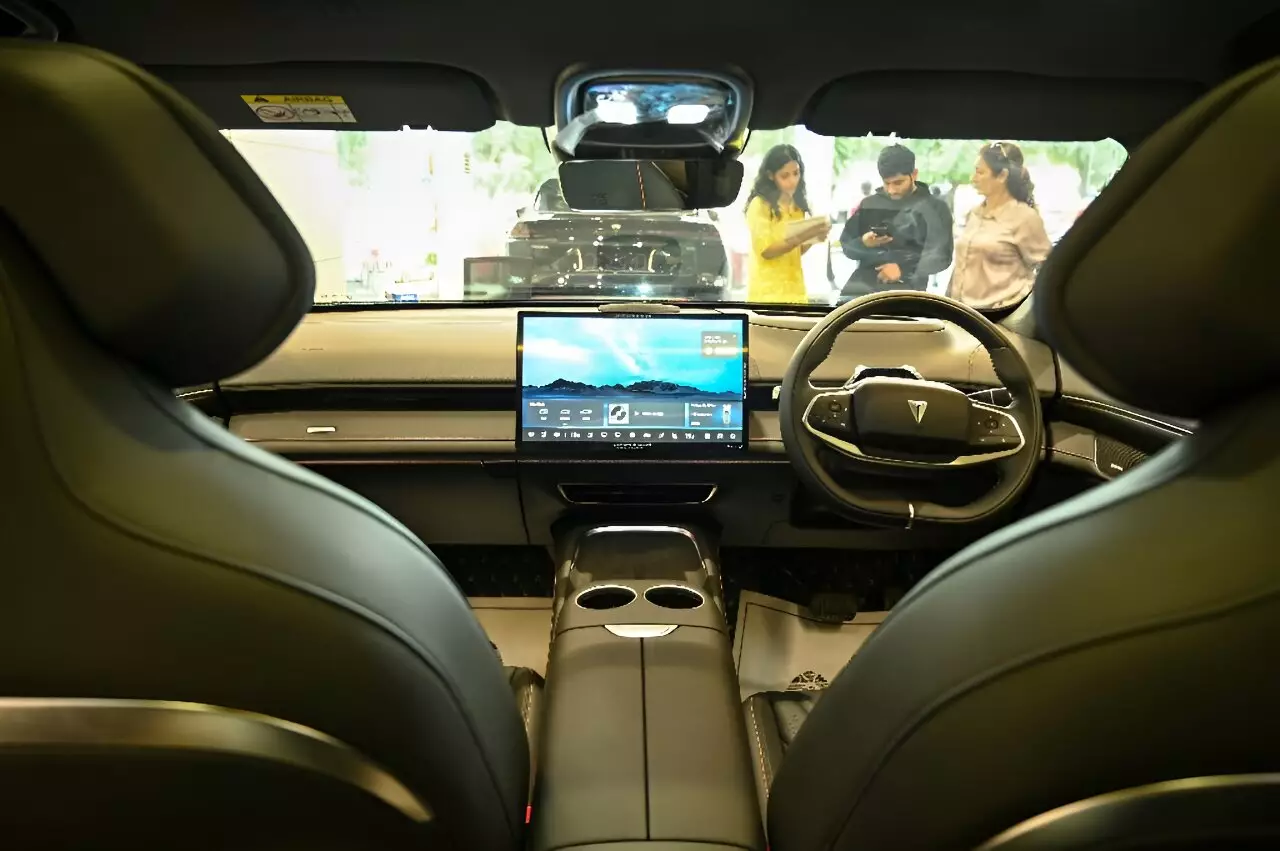A decade ago, the concept of electric vehicles (EVs) in Nepal seemed far-fetched, with the nation grappling with severe energy shortages and rigorous lifestyle limitations. Fast forward to today, and a significant change has emerged in the electric vehicle landscape, primarily driven by the country’s abundant yet underutilized hydropower resources. Surendra Parajuli, a taxi driver in Kathmandu, embodies this transformation through his recent purchase of a battery-operated BYD Atto 3. This shift represents not only a personal financial boon for Parajuli—who claims it costs him a tenth of what petrol does—but also signals a larger shift toward sustainable transportation methods in a country that once depended heavily on fossil fuels.
With electric vehicles now taking to the streets of a sprawling Kathmandu, it marks the dawn of a transport revolution that may redefine Nepal’s mobility. Official estimates suggest there are over 40,000 electric vehicles traversing the mountainous terrain, although this number pales in comparison to the 6.2 million gasoline-powered vehicles on the roads. This disparity, however, may be narrowing; reports indicate that a staggering 25% of all electric vehicles were imported in a single year, signifying an appetite for greener transport alternatives. As Nepal gears toward a future with electric mobility, it simultaneously steps into a bustling global narrative where climate awareness increasingly dictates consumer choices.
One of the primary drivers behind the surge in electric vehicle adoption is Nepal’s newfound access to inexpensive energy, a pursuit facilitated by the country’s extensive dam-building projects. Historically, more than 80% of Nepalis were deprived of reliable electricity; however, the landscape has changed dramatically in the past two decades. The government has managed to quadruple hydropower output in just eight years, bringing electricity to 95% of its population and effectively altering the fabric of daily life.
Importantly, this cheap hydroelectric power presents an economically viable alternative to fossil fuel dependencies, with the Nepal Electricity Authority estimating significant cost savings due to declining demand for imported fuel. This newfound energy security doesn’t just empower individuals like Parajuli; it also has the potential to kickstart economic revitalization, diminishing the reliance on remittances traditionally sent home by workers abroad.
While the push for electric vehicles may appear green on the surface, it presents a complex ecological narrative. With transportation accounting for approximately five percent of the nation’s greenhouse gas emissions, the shift to electric vehicles could indeed mitigate air pollution—an issue that has plagued Kathmandu in recent years. Yet, concern arises regarding the larger environmental impact of increased hydropower development.
The construction of new dams has raised red flags among environmental advocates, given the potential detriments to sensitive ecological zones, such as forests and wildlife habitats. In a society increasingly vulnerable to the consequences of climate change, including floods and landslides, these risks cannot be underestimated. Critics argue that the government’s rapid embrace of electric vehicles lacks comprehensive strategies addressing these broader environmental concerns.
While the focus on electric vehicles has surged, concerns linger around the management of lithium-ion batteries, which are crucial for the operation of electric vehicles. The promise of sustainability could easily be marred by the pitfalls of electronic waste, a growing concern as more of these batteries reach the end of their life spans. Disposal and recycling efforts are not yet robust enough to cope with the impending influx of used batteries, presenting a serious health hazard due to the hazardous materials they contain.
As highlighted by industry experts like Nabin Bikash Maharjan, the government’s strategy seems short-sighted, focusing on immediate gains while neglecting long-term waste management solutions. This oversight underscores a vital question: Can Nepal genuinely shift toward an environmentally sustainable future if the ramifications of electric vehicle proliferation remain unaddressed?
Moving forward, a balanced approach is essential. The Nepalese government must scrutinize its policies, aligning its electric vehicle initiatives with a comprehensive environmental strategy. This includes investing not only in EV infrastructure but also in sustainable practices for battery disposal and recycling. As Nepal prepares to expand its power generation capabilities significantly, it must prioritize environmental stewardship alongside economic progress.
As the world increasingly turns toward electric mobility in the face of climate crisis, Nepal stands at a crossroads. With electric vehicles poised to lead the charge in sustainable transportation, the path chosen will reflect the nation’s commitment to a greener, cleaner future—or risk becoming mired in the complexities of progress that might ultimately compromise environmental sustainability. The evolving narrative surrounding electric vehicles in Nepal is not merely a local story; it is part of a global drive towards ecological balance that requires careful consideration and action.

